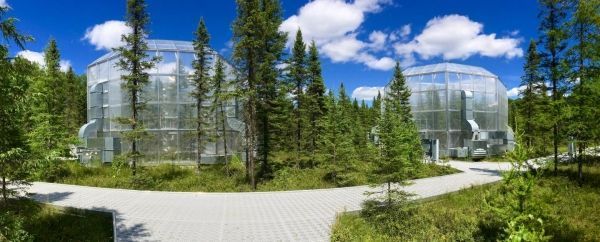A futuristic experiment simulating warmer environmental conditions has shown that peatland vegetation responds to higher temperatures with an earlier and longer growth period. A study published in Nature revealed that turning up the heat accelerates spring greening in mature trees, shrubs and mosses and delays fall color change.
The new findings, based on observational data collected at a Department of Energy experimental site, will improve predictive models of environmental change and may have implications for forests around the world.
“This is the first time we’ve been able to confirm the response of vegetation to this range of temperatures, which exceed what can be found in the historical record,” coauthor Andrew Richardson of Northern Arizona University said. “We did not foresee the major role that temperature plays in extending plant activity in the fall.”
The research team used direct observation and digital repeat photography to measure plant greenness over three years at the Spruce and Peatland Responses Under Changing Environments study, a unique ecosystem-scale experiment constructed and operated by DOE’s Oak Ridge National Laboratory.
Read more at DOE/Oak Ridge National Laboratory
Image: Plants in the warmest of several study areas at the SPRUCE experimental site remained green and functional up to six weeks longer than plants growing at ambient temperatures. (Credit: Oak Ridge National Laboratory, U.S. Dept. of Energy)


